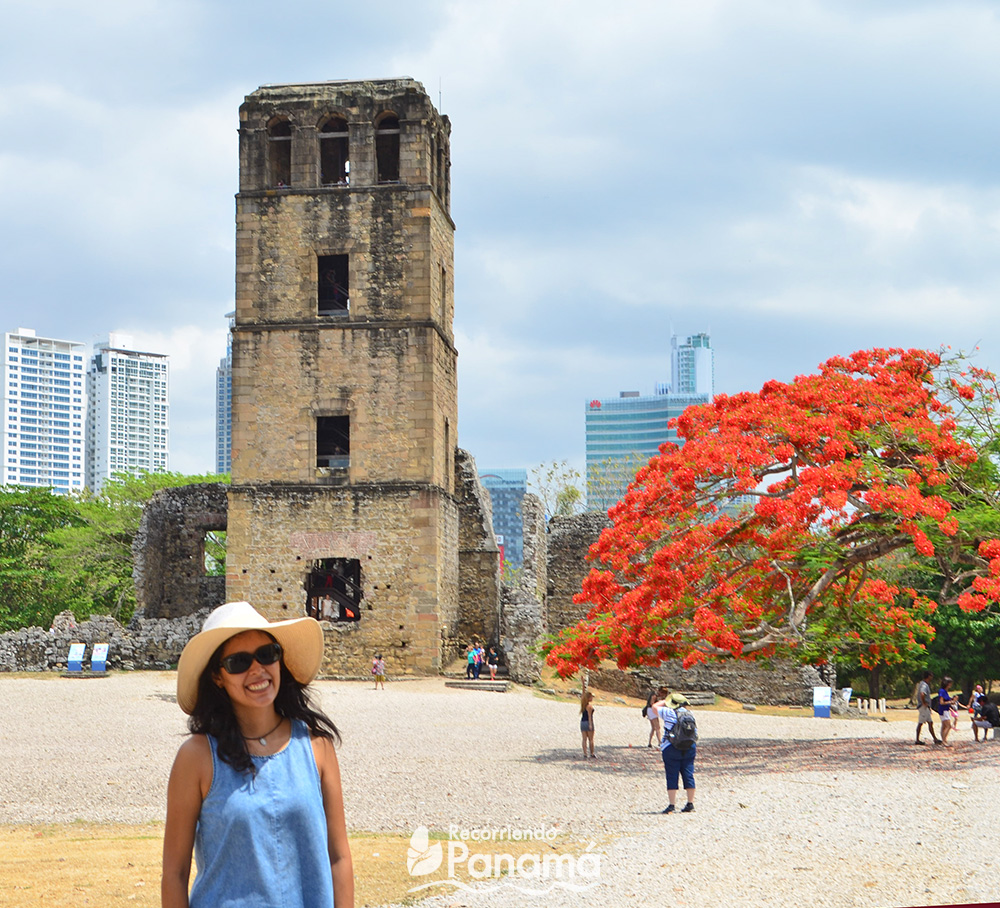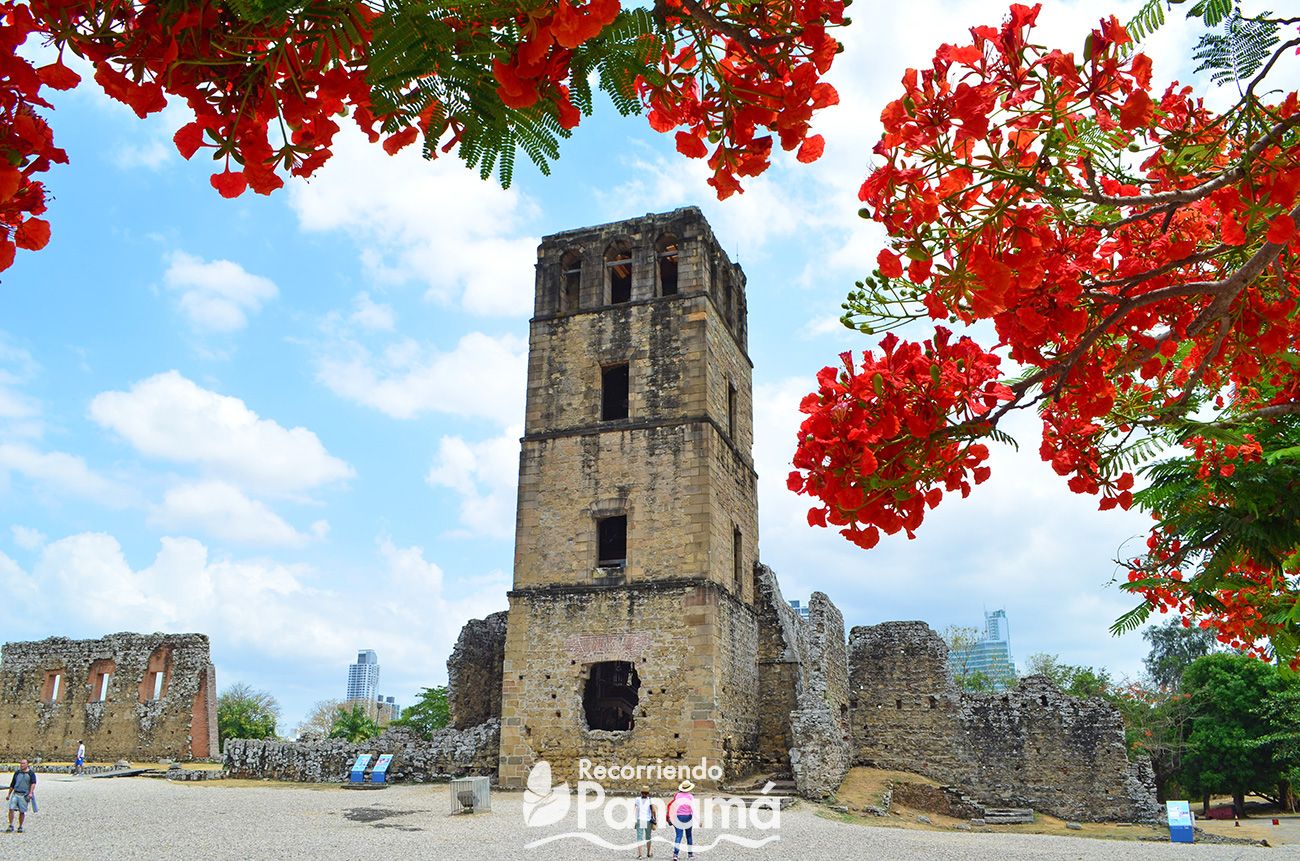
I went to visit Panama Viejo Archaeological Site and learn a little more of this place.
As Panamanians, many of us know a little about the history of this place, although it is not so true, because unfortunately our history books have some errors, or at least I learned things that actually happened differently.
Currently the Patronato is doing Open Doors Days, free of charge at Panama Viejo Archaeological Site, so there is no excuse, and also now they are also dramatized and fabulous, so why not go and visit this place?
The Spanish abandoned Santa María La Antigua del Darién and looked for a place to settle, since the climate affected them a lot.
And this new place had better conditions, it was also already populated by the indigenous people, they occupied their houses (they were made of wood or bamboo), in addition to having them as slaves.
Although the indigenous people were rebellious and difficult to work with, part of which they brought African slaves, who were strong and resisted.

Panama City (today: Panama Viejo)
The City was founded on August 15, 1519 by Pedro Arias Dávila (also known as Pedrarias Dávila).
It was the main residence of the elite on the mainland, its strategic position served for international transit, either for expeditions or for trade.
The area was approximately 60 hectares, but currently 28 hectares are protected. Since 2003 it is considered by UNESCO as World Heritage.
First of all, arrive at the Archaeological Site, for those who have not been, now that it is under the Patronato.
There are parking lots, from the outside it seems that there are only for about 6 cars, but once one enters, you can see the ramp that goes down to where the rest is, overlooking the Bay of Panama, so if it was Herbie, I’d be happy.
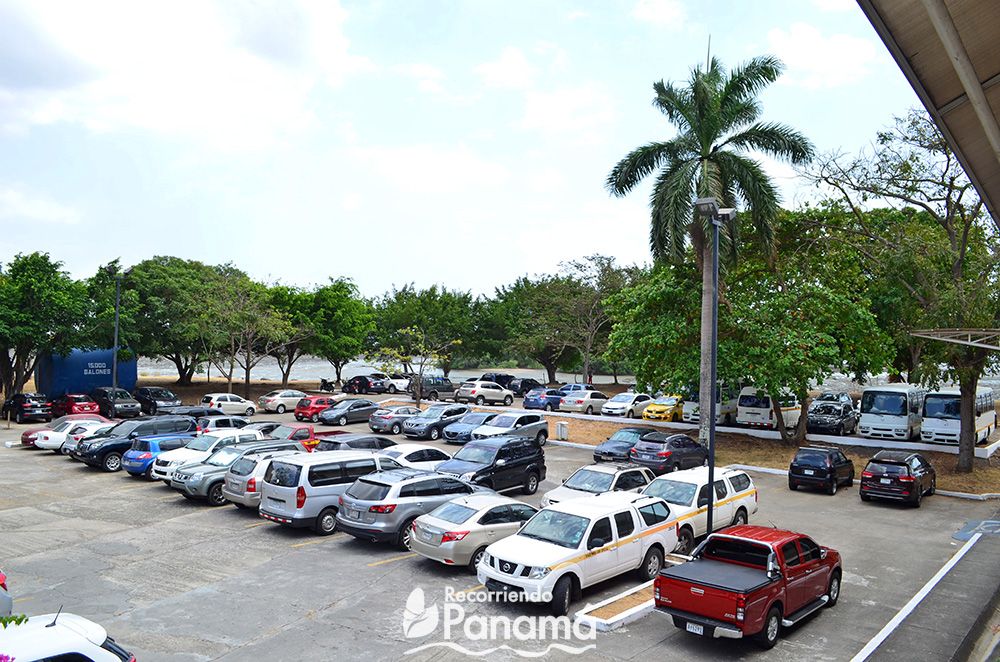
Then, I went to the ticket office to be told the meeting point for the guided tour, and since there were a few minutes left, I went to see the bookstore, where there are mainly novels (current) and stories (for children).
Start the tour
Our guide introduced herself and we started the tour. First of all, I must clarify that everything that is inside the fence is protected by the Patronato.
The rest that is also historical, unfortunately it is left out, but the Patronato also maintains it.
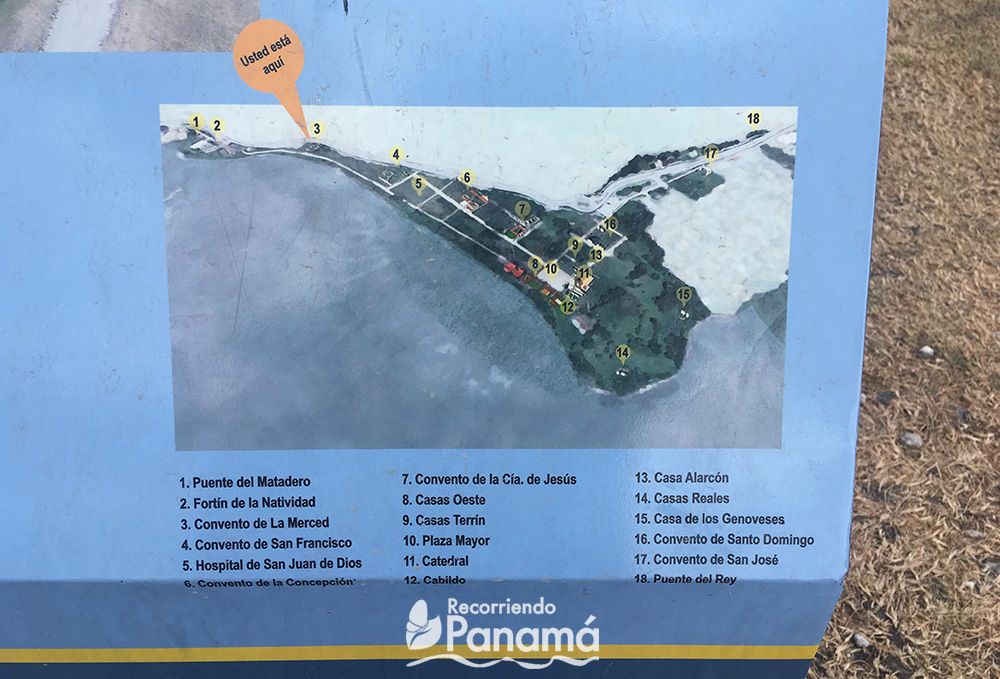
Bridge of the Matadero
Let’s continue, before entering you can see the Bridge of the Matadero (slaughterhouse) (its name is due to the fact that there was a slaughterhouse nearby).
This bridge was over the old Algarrobo river and it is possible that the Pirate Morgan entered there, there is also the Fortín de la Natividad (Fort of the Nativity) that served as a defense.
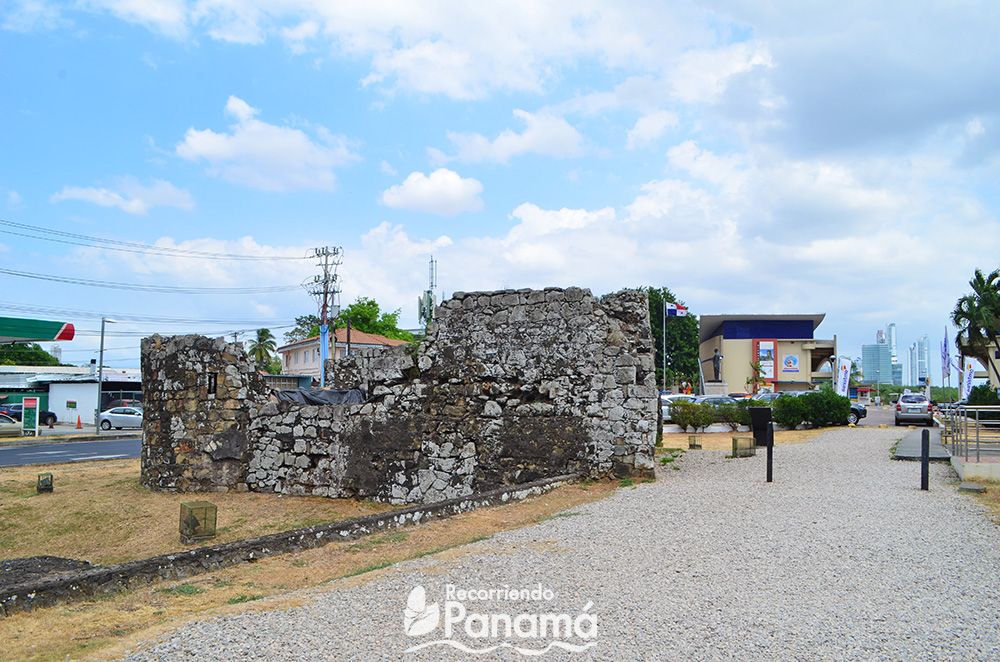
Convent of La Merced
The first place in the Panama Viejo Archaeological Site is the Convent of La Merced, there is very little left of it, since its stones were taken to be used in the Church in the new city (today Casco Antiguo) and what was left was used as a barracks.
This place was used by the pirates when they arrived, partly because it was the farthest from the city.
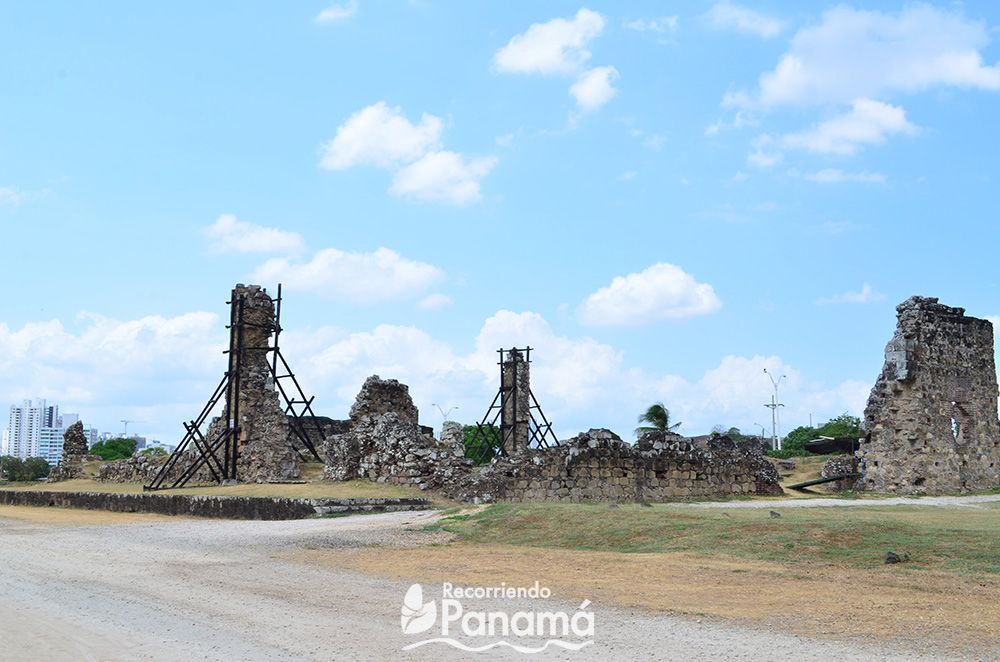
Convent of San Francisco
The Convent of San Francisco housed people who had no place to live and also travelers, its construction began in 1603 and the place had a good location, it was built on an elevated basis and overlooking the beach.
Hills with trees
On the way you can see some hills with trees, according to the guide, the space of the hills is an approximate of the houses and the trees are Guayacanes.
Now, in previous visits to Panama Viejo Archaeological Site, they have been told that underneath there are archaeological remains that have not yet been excavated.
For this reason these trees are inside a cement pot, if we observe the edge of it was visible.
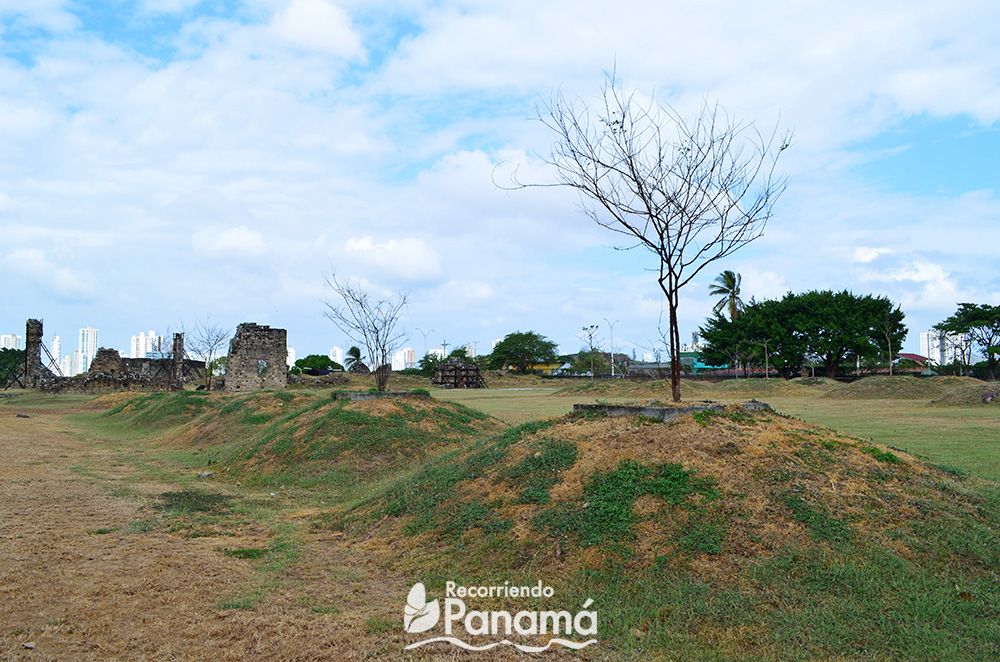
Convent of the Nuns of Concepción
The Convent of the Nuns of Concepción was under construction and ironically it is the best preserved. The virgin who has come from Peru.
There are some points that have been intervened, this means that elements have been placed so that it does not deteriorate further, being easy to distinguish, so we see that it is original (Calicanto) and that it is not.
Also, they serve to help us in the visit, such as the ramps, stairs, wooden floors, they can be removed easily.

Calicanto: mortar or calicanto made with sand, salt and crushed snail.
This place has a cistern, dating from 1640: it is a well created to store water.
In the case of the Convent of La Merced, up to 124,000 liters of rainwater could be stored, these were sold.
It was not customary to drink or use river water, and there were no wells in the place, due to its proximity to the sea, so it was time to buy or bring it from a distant place like Portobelo.
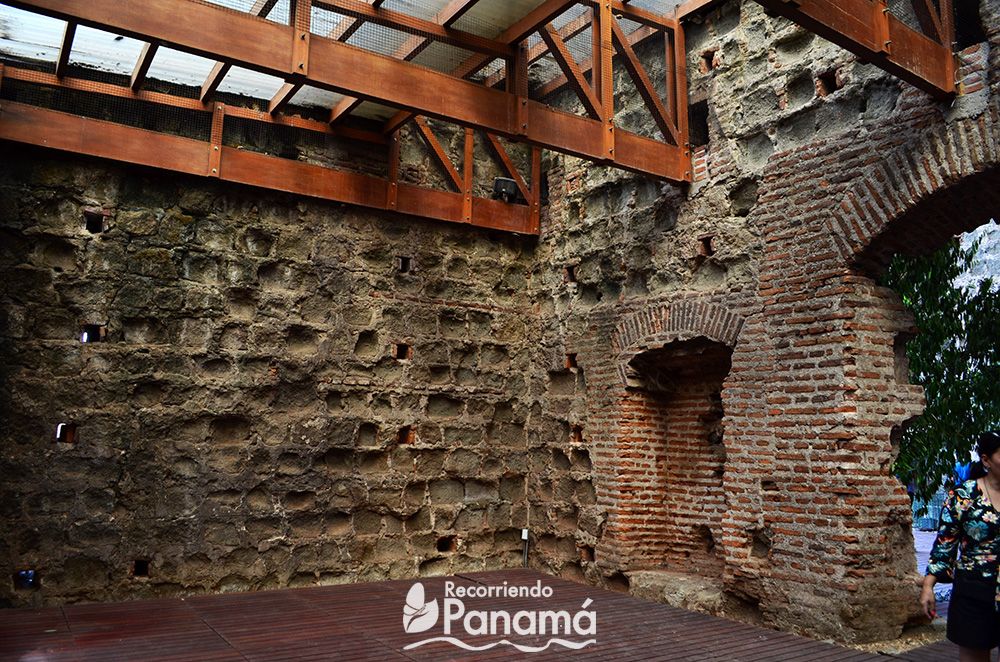
The nuns, unlike the priests, lived in a cloister.
Many entered because they did not have financial resources, they were alone or because their relatives wanted it.
The monasteries had high walls and few windows to the outside, and to attend Mass they had to be in a special enclosure with latticework, where they could see out, but no one could see in.
The Order of the Immaculate Conception was the first order to go from Europe to America.
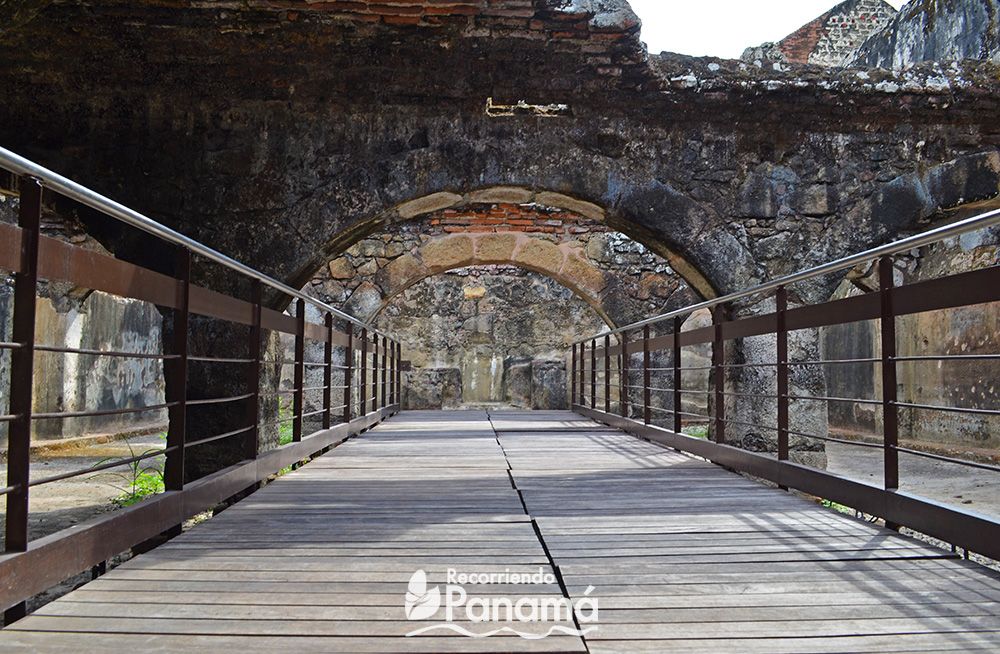
San Juan de Dios Hospital
There was also San Juan de Dios Hospital, where it lacked water and medicine. Mild cases were more likely to be cured.
Convent of the Jesuits
It was the last to be founded (1578-1582), it is also known that clay was used instead of calicanto.
Mayor Square
La Playa Mayor (Major Square) of Panama Viejo Archaeological Site was a center for public beheadings, sale and purchase of slaves and food that came from Europe and other parts of America.
Among the richest of the place were Francisco Terrín and Pedro Alarcón, for which their houses were near the Church (Tower of Panamá Viejo).
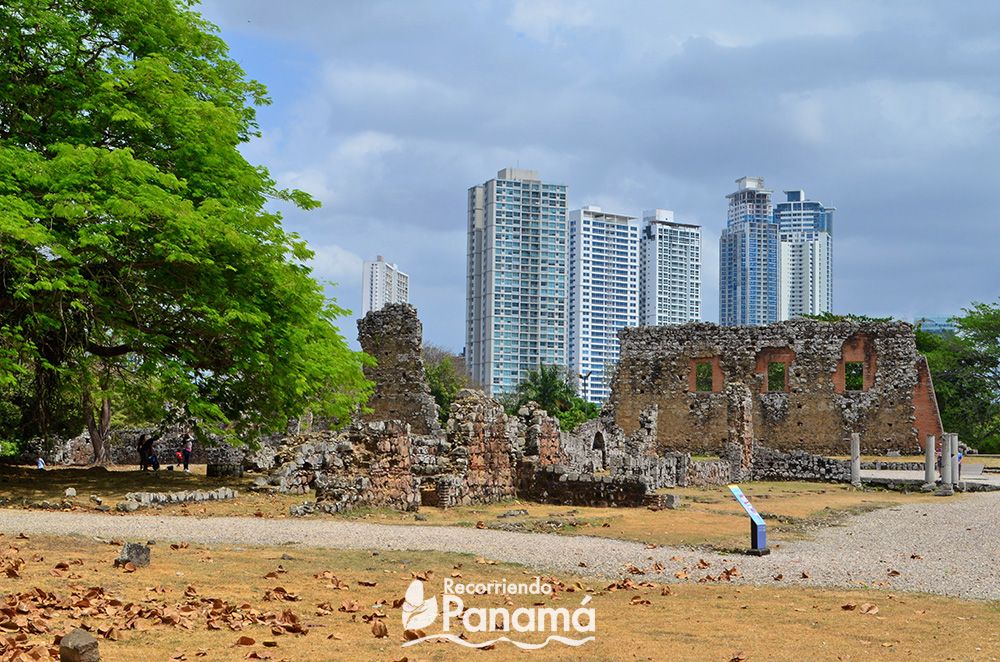
Once the tour was finished on the outside, the guide took us to the museum to explain the place a little more with a giant interactive model.
From there it was time to rest while the dramatized part arrived, the truth is that I had no idea how it was going To be.
Dramatized visit to La Plaza Mayor Museum
It all started at the entrance of La Plaza Mayor Museum of Panama Viejo Archaeological Site, where the actors explained events to us in the different rooms.
First, we met Pedro Arias Dávila, founder of Panamá Viejo, from there he happened to us with the indigenous people of the time, who between their dialect and a few words in Spanish were enveloping us at the time.
They even danced and some children participated in their acts. They even had a fight with Pedro Arias Dávila.
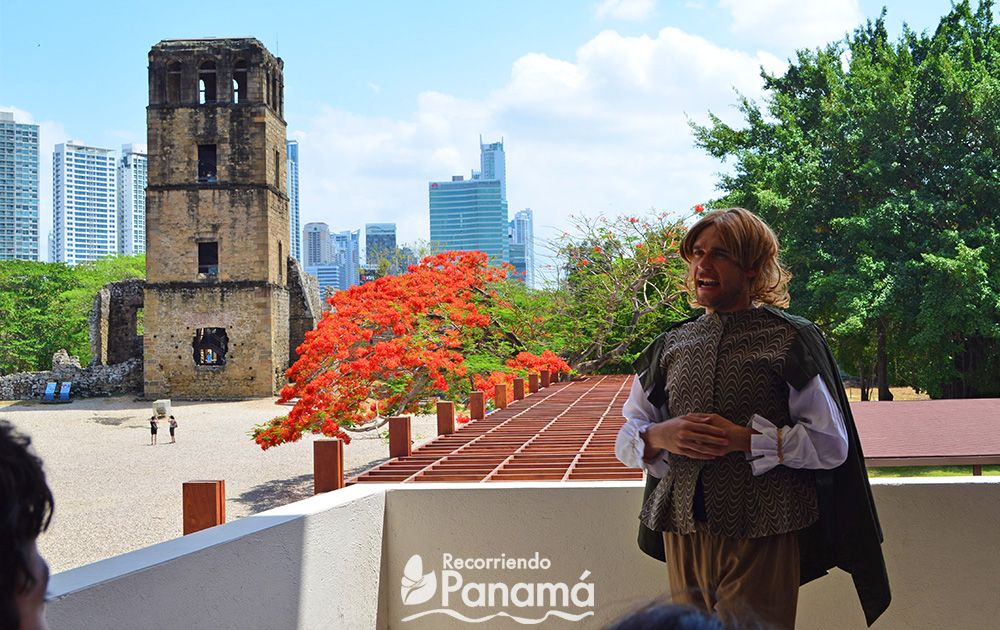
The Spanish explained to us the place, how they arrived, where they settled and the arrival of the Pirate Morgan, where the governor, Juan Pérez de Guzmán made the decision to burn the place (because it was thought that the pirate wanted to take the place) and evacuate all the city, to which we had to go as quickly as possible to the next room, as if we were fleeing from the pirates.
To the following representations I cannot listen much, because more and more of us were each time.
What I managed to see was that a lady of the time explained how they lived and that they had some vessels where they urinated and then they threw it out the window saying water down.
Don Alarcón and another character that I did not know who he was also arrived.
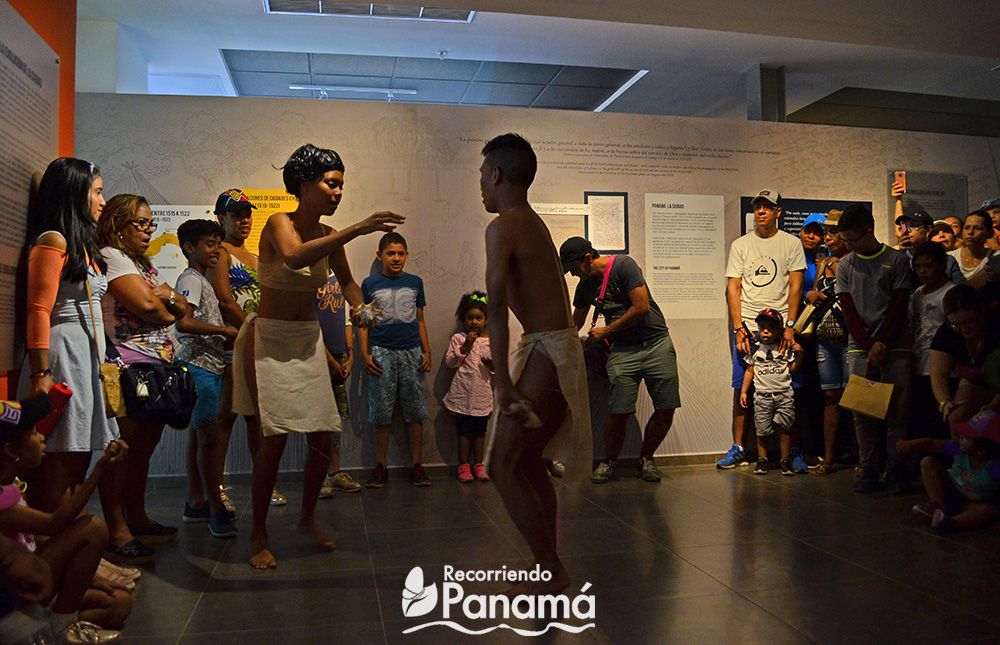
Then you can visit other sites such as the Tower of the Cathedral where you can see a representation of the spiral staircase, the ruins of the houses and other sites.
A couple of years ago, I remember there were some excavations, almost superficial, where skeletons had been found and you could see them still on the ground.
The merchants used to have a 2-level house, with masonry at the bottom, where they had their business, and wood at the top, where they lived.
There is also a green area under the remains of the trees where you can have a picnic and then continue with the tour.
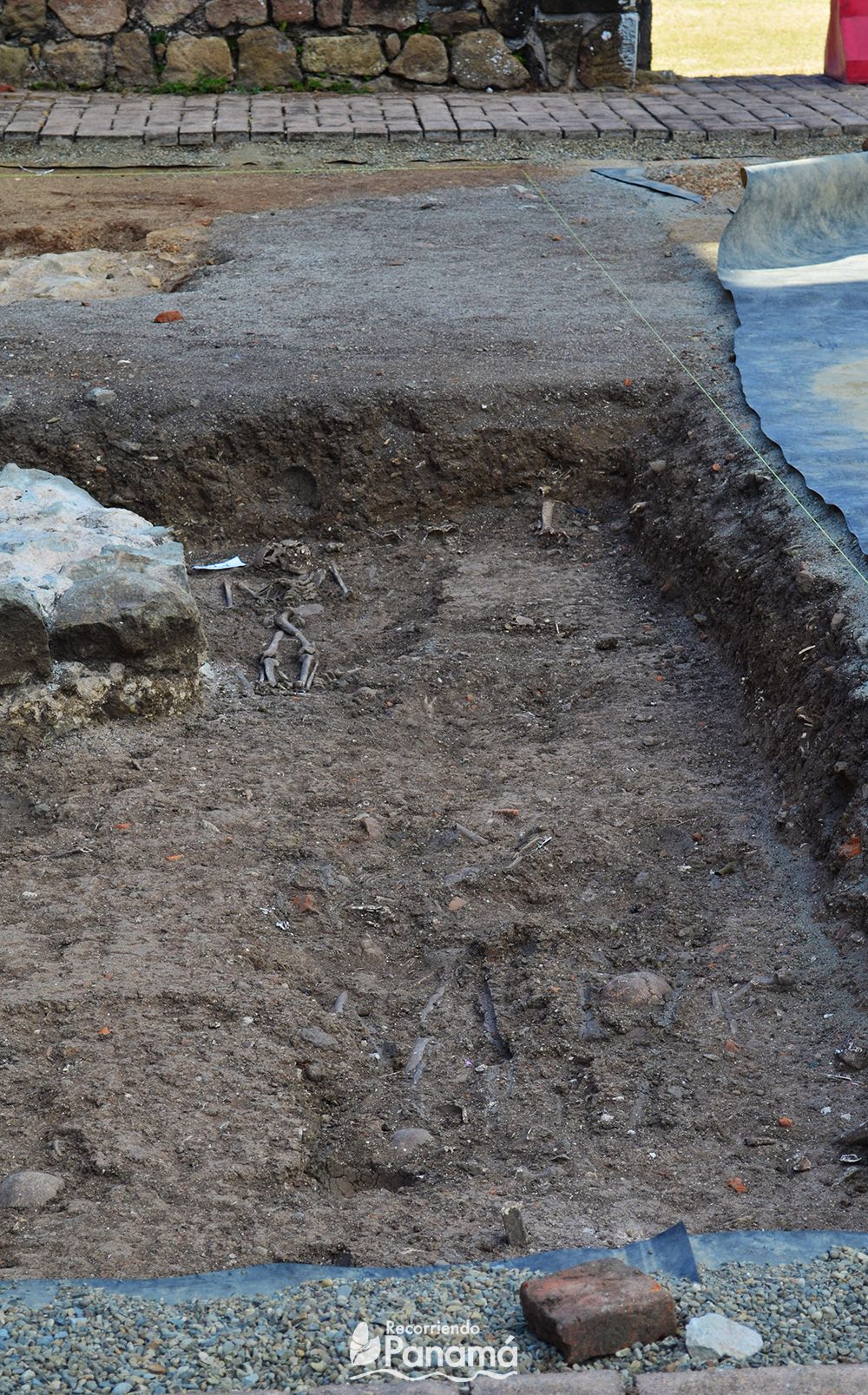
Interesting facts
- Most of the houses and altars had gold and semi-precious stones.
- The stones with which they built were brought from the rivers.
- You can see several stone wells, but in reality they are not wells, they were built by previous governments and were flowerpots.
- The mangroves appeared 20 years ago in the place (late 90s), before everything was beach, if anyone remembers, before it was easy to see the Tower from other places, such as the South Motorway bridge. One of the theories is that maybe there were, but they were cut or eliminated by the natives or locals of the time.
- The Cofradías (brotherhoods), was according to race and economic status.

The dramatized guide was super fun, however, I think the dramatized guides should be limited, because we were like 100 people inside the museum, practically like sardines in a can.
On the other hand, I do not recommend the non-dramatized guide for children under 12 years of age, because they get tired and it is difficult for them to be silent.
I tried to be as close to the guide to hear something, because I only heard some children saying that they were hot, hungry, they wanted to leave, almost crying and no matter how much the parents tried to make them be silent, they insisted.
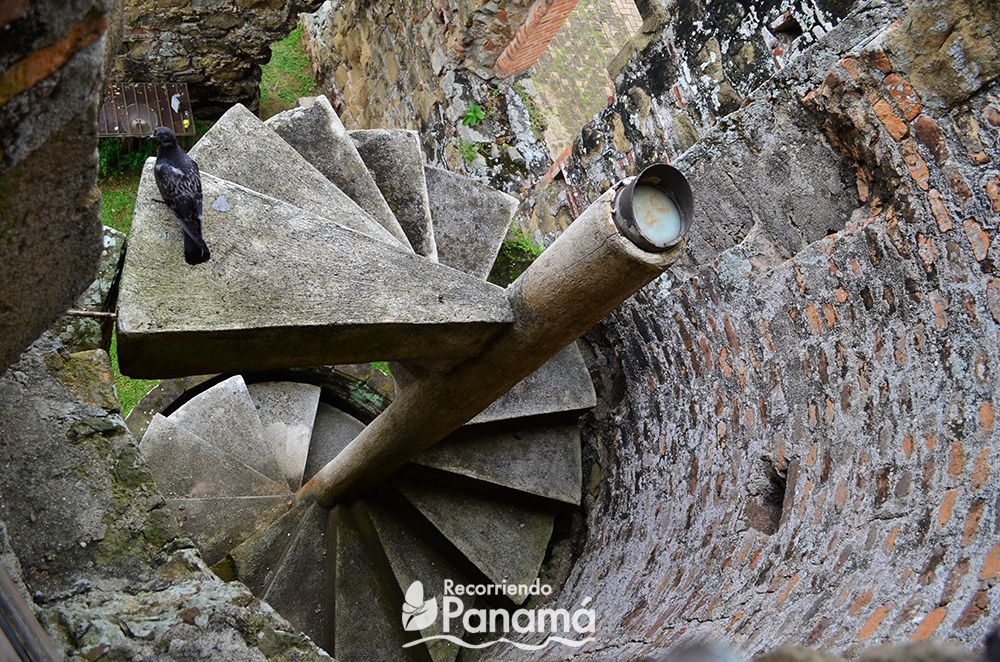
After each guide, they give us a survey sheet to fill out, about whether they like it and suggestions, I think it’s super good, because that’s how they improve.
Note: there is a toilet at the entrance of the archaeological site, in the museum and in the middle of these two, but the latter is hardly visible.
Advices
- Bring water,
- Bring snacks, you can have a picnic, but don’t dirty the place,
- Do not climb on the monuments or archaeological remains, as it is prohibited, furthermore this deteriorates them,
- Sunglasses,
- Cap,
- Sunscreen,
- Fresh clothes,
- Sneakers,
- Umbrellas, in rainy weather.
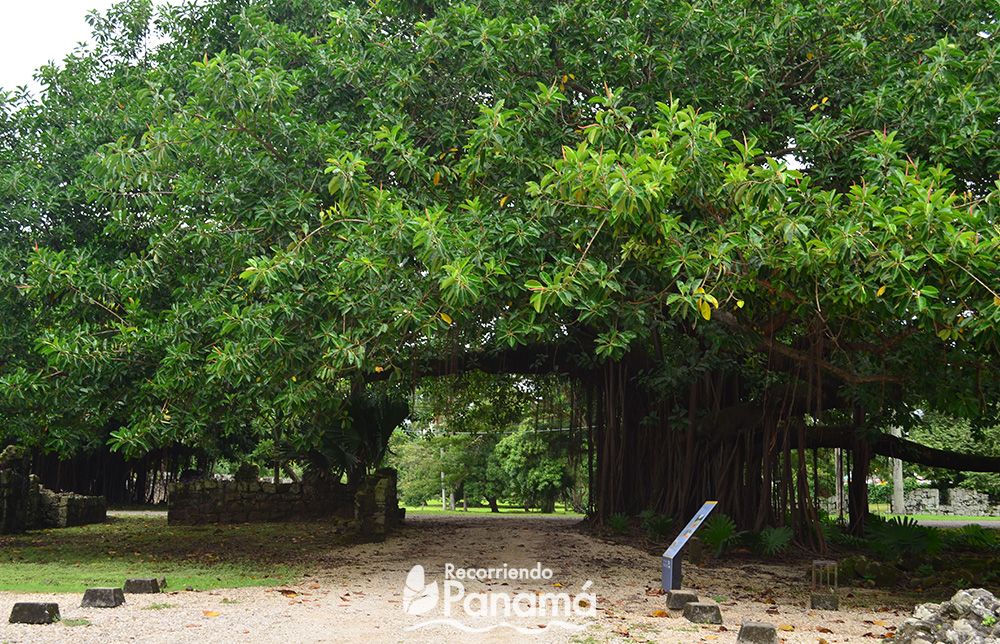
Hours
- Tuesday to Sunday,
- 8:30 am. to 5:30 p.m.
Prices
Residents *
- $5.00 adults.
- $2.50 seniors.
- $1.00 children and students (6-17 years old)
- $3.00 university students.
Non-residents *
- $10.00 adults.
- $3.00 children and students (6-17 years old).
- $5.00 university students with a card.
Includes*: Archaeological Site, Museum of Playa Mayor, Viewpoint of the Tower and internal transport.
$3.00 fee entrance to the temporary exhibition.
Free entrance (only for nationals and residents), one Sunday a month, Open House Days from 9:00 a.m. to 3:30 p.m. (Archaeological Site and Plaza Mayor Museum).
These days $1.00 is usually charged for internal transport, although it is not necessary, because what you have to walk from the entrance to the museum, it can be 8 minutes, in which you will see some small ruins, and the bay of Panama.
Note
- There are parking lots, more than you can see from Avenida Cincuentenario.
- Currently it is required to make a booking through a form and send it to reservapanamaviejo@gmail.com, and there are entry times (9:15 a.m., 10:30 a.m., 12:45 p.m. and 2:00 p.m.).
- The payment of the entrance is made by bank deposit, for more information, you can communicate at (507) 226-8915 or by WhatsApp at (507) 63494376.
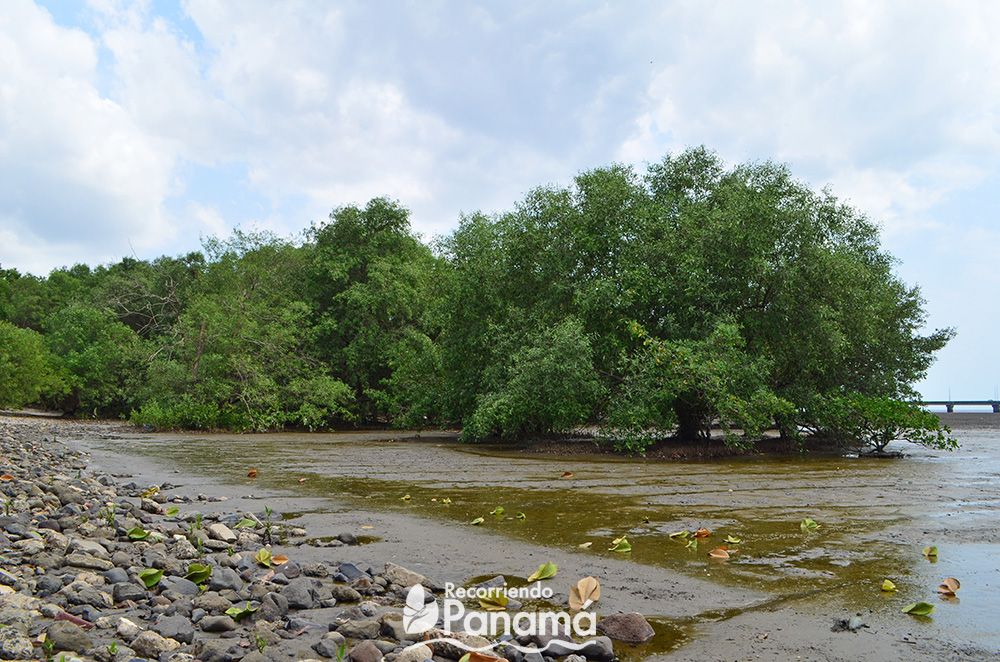
How to get Panama Viejo Archaeological Site?
You can go both by public transport and by car, taxi or other transport service.
By car, take Balboa Avenue, then continue along Israel Avenue, it will connect you with Cincuentenario Avenue (do not take the subway).
After the 2nd traffic light (on this avenue), on the right hand side will be the entrance to the Archaeological Site.
If you go in the opposite direction, you can take Domingo Diaz Avenue (also known as Tocumen Avenue) enter the old Roosvelt (Avenida Cincuentenario.
Continue along that road, the archaeological site is on the right-hand side after the roundabout, for which you must continue until you can take the opposite road, keep to the left and once you enter Cincuentenario Avenue again, you must take the street on the right to enter the parking lots of the Panama Viejo Archaeological Site.
By bus: the routes that pass through the museum are: C640, C641, C642 and I202, some can be taken at Albrook Mall, others Balboa Avenue or José Agustin Arango Avenue (in front of supermarket 99 of Balboa).
The stops where you should get off are Coco Bay-I, Coco Bay-R or Salida Cincuentenario-R, it depends on which direction you go.
Then walk for 3 to 5 minutes to the entrance of the Archaeological Site of Panama Viejo. minutes.
More Information Patronato of Panamá Viejo, click here.
Update: 2021.
Other places you may like
- 7 Churches of Casco Antiguo
- La Plaza Mayor Museum in Panama Viejo
- El Caño Archaeological Park
- A Visit to the Amazing Barro Colorado Island
- Punta Culebra Nature Center- Smithsonian Institute
- Visiting Miraflores Visitor Center of Panama Canal
- A Visit to the Afro-Antillean Museum
- Bayano Canyon is Like Being on a National Geographic Chapter
